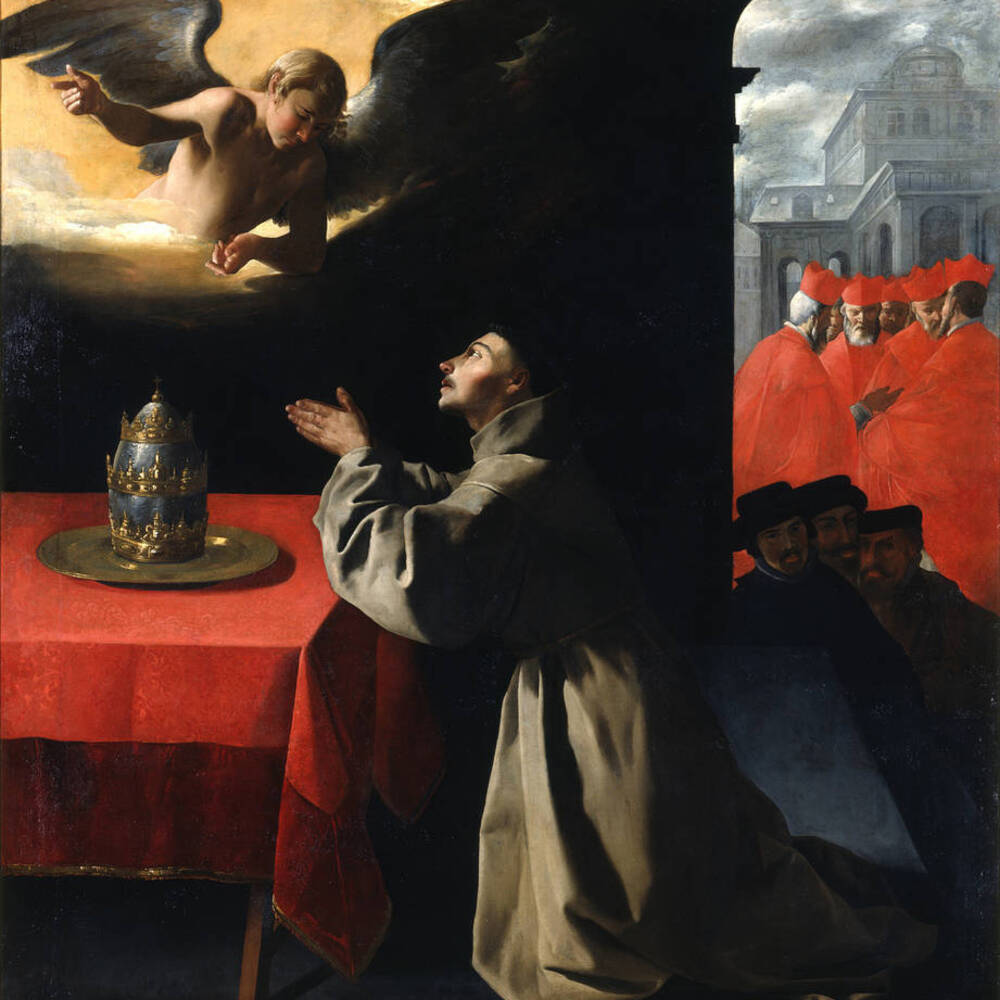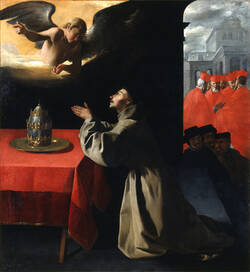Elections are not always easy – and that also applied to the election of a new Pope in 1268. Owing to disagreement among the Cardinals after the death of Clement IV, a successor was only found after three years and with the aid of St Bonaventure. Here, the Franciscan monk kneels in front of the papal tiara as an angel reveals to him the name of God’s desired candidate. On the right, three men in contemporary costume watch the scene, while behind them Cardinals can be seen discussing the matter.
Further Media


Zurbarán was working at the time of the Counter-Reformation.
After Martin Luther published his famous Ninety-Five Theses in 1517, the Protestant Reformation quickly spread, especially in northern Europe. The Catholic Church had to respond – and to coordinate that response, the Church leaders met from 1545 in a series of sessions known collectively as the Council of Trent. The Council not only legitimated art in religion, but declared it as one of the key weapons in propaganda to support the Catholic cause. To prevent paintings from being profane or immoral, artists were subject to a set of strict rules governing how they should depict saints and scenes from the Bible. In the wake of these regulations, even sections of naked bodies in Michelangelo’s frescos in the Sistine Chapel were painted over.
Moreover, artists were to present religious themes in ways easily understood by the faithful, speaking more to their hearts and souls, than their intellects.
Zurbarán worked for churches, monasteries and convents in Catholic Spain, and kept strictly to his patrons’ guidelines. Our painting also meets the standards for art laid down during the Counter-Reformation. The main scene is placed in the foreground and the central figure of Bonaventure, with his powerful three-dimensional presence, appears extremely real. In addition, the intense colour and brilliantly painted fabrics have a strong emotive appeal.
- Location & Dating
- c. 1628/29
- Material & Technique
- Oil on canvas
- Dimenions
- 239 x 222 cm
- Museum
- Gemäldegalerie Alte Meister
- Inventory number
- Gal.-Nr. 696